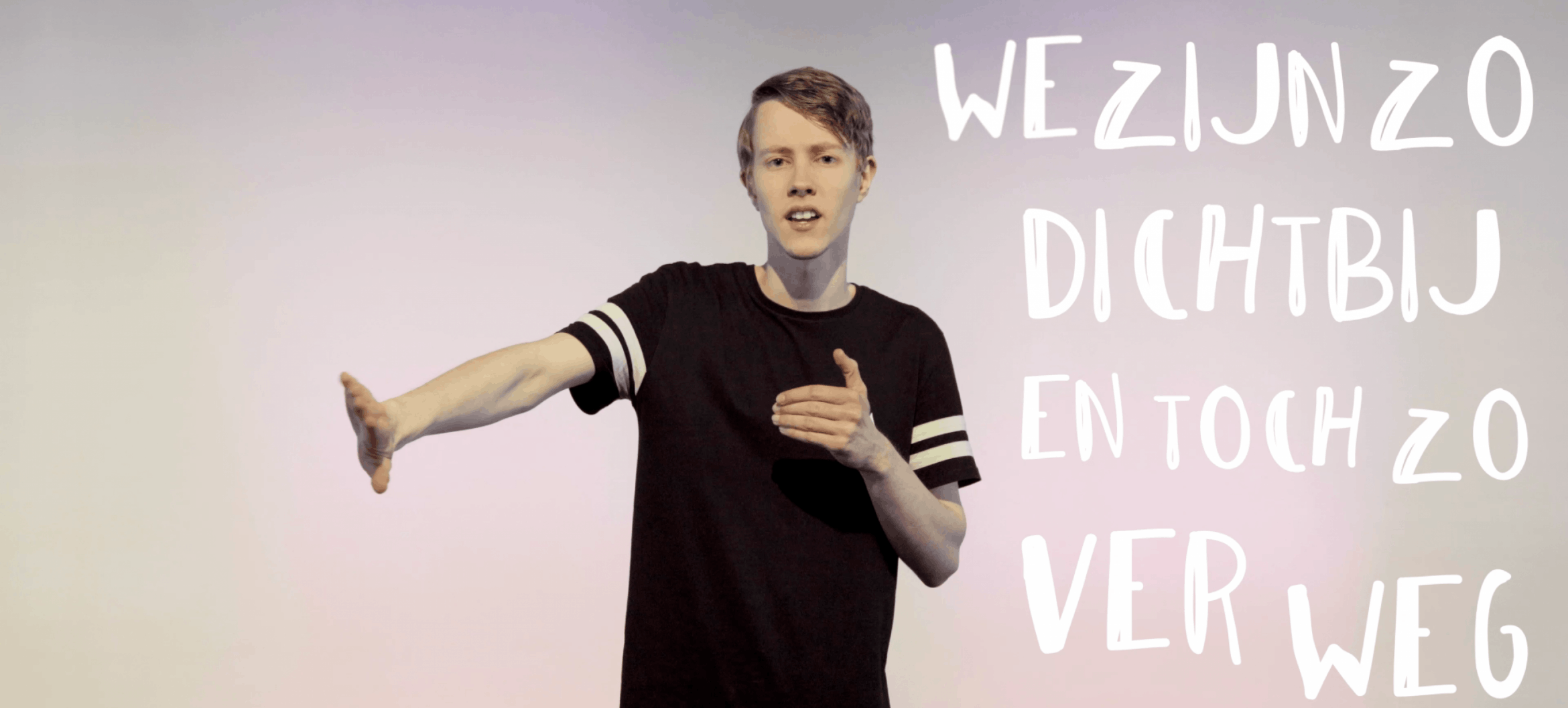How do people who are deaf and hard-of-hearing experience music?
- Music
Music can connect us, bring us joy, depress us, and can even fire up an entire football stadium. But how does that work if you are deaf or hard-of-hearing? How significant is music to you then? That is what Jonathan Vonkeman has been researching during his MediaMusic study at ArtEZ Academy of Music in Enschede.

Originally Jonathan actually wanted to study to become a music teacher. That, he says, was the path he had envisioned himself taking before coming to study at the ArtEZ Academy of Music in Enschede. But one day his brother suggested otherwise: “Isn’t MediaMusic actually something better for you?” Jonathan: “I started looking more into what the MediaMusic programme was all about and it looked even more interesting to me than a path in education.” It ended up being a bit of a close call to apply, due to the fact that at the time, Jonathan only had 2 months until the admission deadline, and he had yet to put a single note onto paper. "But once I knew that MediaMusic was what I wanted to pursue, I started working hard on my music production and songwriting. And in the end, thankfully, I was accepted.”
Anything is possible
In the few years that followed, his focus would end up changing several times again. “Each year my goal would change. There is also space for that deliberately built into the programme. You learn a little bit from many different topics, taking in knowledge from every direction and styling your personal path accordingly. That way you find out through trial and error what resonates most with you. Anything is possible; your research focus is never fully set in stone.” Ultimately Jonathan chose the Producer for Bands, Artists & Media specialisation option. “At first glance, it seems like under this specialisation option, you will mostly go on to produce songs for artists. And that could be the case, that you regularly write songs for bands and resell them. But the skills from this study extend more broadly than that. You also could become a singer-songwriter, or a mixing engineer. Or you could go in a completely different direction.” When it came time to choose a research topic, Jonathan found that he was not so keen on learning how to build a studio, apply for subsidies, or other more niche topics. Rather he was more interested in something farther-reaching, something with a broader connection to society.
And then it occurred to me: how do people who are deaf and hard-of-hearing experience music? And how can you make music more accessible for them?
More than just feeling the bass
That ended up being research into how the deaf and hard-of-hearing experience music, and how Sign Language can play a role in that experience. Jonathan has always been interested in languages: "I lived in the US and Germany for a while as a kid. In those places, you encounter a diverse range of cultures. I became interested in learning Swedish and Japanese, but also Dutch Sign Language. And then it occurred to me: how do people who are deaf and hard-of-hearing experience music? And how can you make music more accessible for them?" He interviewed eight members of the Deaf community. He discovered that for this group of people, the musical experience goes much farther than simply feeling a strong bass physically. "The visual aspect informs a lot of one’s perception of music, especially in regard to assistance from musical interpreters. They must convey a complete visual picture of the music, beyond simply the words themselves.”
Poetry in signing
And that can be a complicated process, Jonathan has noticed. "For my research, I translated a song of mine into Dutch Sign Language. I took all of the little bits and pieces of the music into account: the lyrics, dynamics, structure, rhythm - and also the emotions behind the song. With the help of a music interpreter, I translated every sentence into Dutch Sign Language. It was interesting to deconstruct it like this. I had to always ask myself, what do I as the artist most want to convey here? What emotion motivated this sentence? Besides that, there is also a certain poetry in Sign Language to keep in mind, in its metaphors and symbolism."
Eagle eye
He also had to spend some time considering the execution of the performance. “Members of the Deaf community have an eagle eye. They pick up on even the slightest changes in facial expression, and they can of course tell if you’re not signing something correctly.” He also had to be careful to pick his clothing carefully, so that his signing would show up clearly against the contrast with his outfit and the background and not distract from the gestures. He also had to wear short sleeves. “The lighting had to be just right and the picture on the screen had to come out very sharp. It was quite a challenge to get the details right.”
A universal love for music
The result is a video where Jonathan puts his own research into practice and performs his own song in Dutch Sign Language, with the lyrics shown in real time. It is a piece of music that you are actually able to “listen” to with the sound off. For Jonathan, the biggest eye-opener was learning that people who are deaf and hard-of-hearing place just as much value on music as fully hearing members of society. Someone he interviewed put it best: “you often hear that music brings people together. It's the same for us with hearing loss. We also love music, and because of that, it also brings us together. Love for music is universal - it's not limited only to people with full hearing abilities, but rather, for everyone.”
More information about the MediaMusic course


